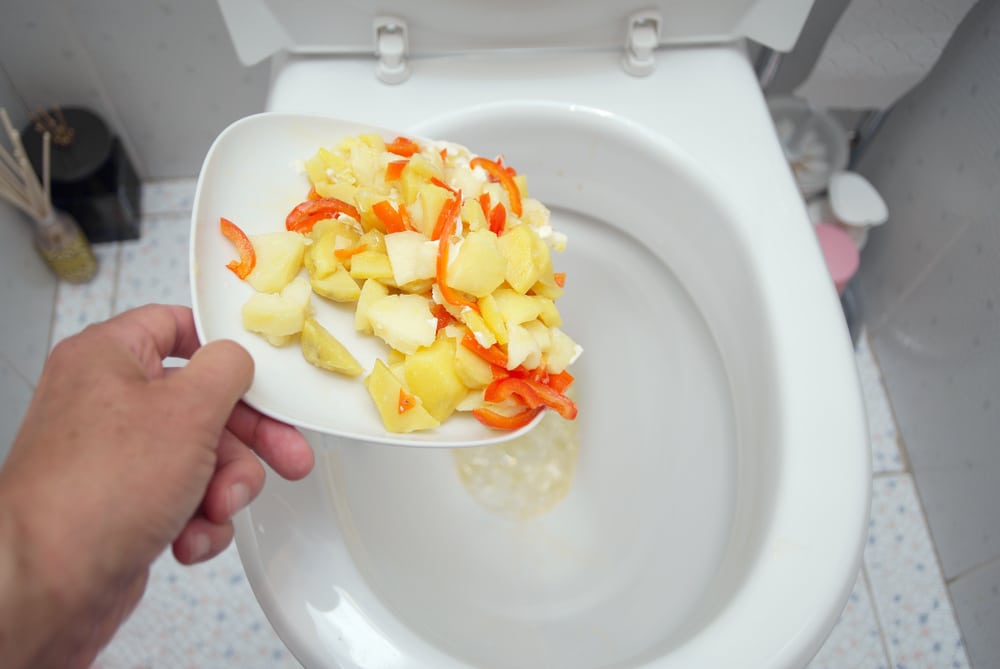Is it Rational to Dispose of Food in the Toilet?
Is it Rational to Dispose of Food in the Toilet?
Blog Article
What're your thoughts with regards to Is it safe to flush food (especially rice) down the toilet??

Introduction
Many people are usually confronted with the predicament of what to do with food waste, specifically when it involves leftovers or scraps. One typical question that arises is whether it's all right to flush food down the commode. In this post, we'll delve into the reasons that individuals may consider flushing food, the repercussions of doing so, and alternative techniques for proper disposal.
Reasons individuals could think about purging food
Absence of understanding
Some individuals may not know the potential harm caused by purging food down the bathroom. They might mistakenly believe that it's a safe technique.
Benefit
Flushing food down the bathroom may appear like a fast and simple option to throwing away undesirable scraps, particularly when there's no nearby garbage can available.
Idleness
Sometimes, individuals might simply select to flush food out of large negligence, without considering the effects of their activities.
Repercussions of flushing food down the commode
Environmental effect
Food waste that winds up in rivers can add to air pollution and damage water communities. Furthermore, the water made use of to purge food can stress water sources.
Plumbing issues
Purging food can lead to clogged up pipes and drains, creating expensive pipes repair work and aggravations.
Sorts of food that must not be flushed
Coarse foods
Foods with coarse structures such as celery or corn husks can get entangled in pipelines and trigger clogs.
Starchy foods
Starchy foods like pasta and rice can soak up water and swell, leading to clogs in pipes.
Oils and fats
Greasy foods like bacon or food preparation oils should never be purged down the commode as they can strengthen and trigger obstructions.
Correct disposal methods for food waste
Utilizing a waste disposal unit
For homes geared up with garbage disposals, food scraps can be ground up and flushed with the plumbing system. However, not all foods are suitable for disposal in this manner.
Recycling
Certain food packaging materials can be reused, reducing waste and minimizing ecological effect.
Composting
Composting is a green way to dispose of food waste. Organic products can be composted and made use of to enhance soil for horticulture.
The significance of proper waste monitoring
Reducing ecological harm
Correct waste monitoring practices, such as composting and recycling, assistance lessen pollution and maintain natural resources for future generations.
Protecting plumbing systems
By staying clear of the practice of flushing food down the toilet, homeowners can stop pricey pipes repair work and preserve the stability of their plumbing systems.
Final thought
To conclude, while it may be appealing to flush food down the bathroom for comfort, it's important to comprehend the prospective consequences of this activity. By taking on appropriate waste management techniques and throwing away food waste properly, people can contribute to healthier plumbing systems and a cleaner setting for all.
FLUSH FOOD DOWN THE TOILET?
FLUSHING FOOD CAN CAUSE BLOCKED DRAINS IN YOUR HOME
All of the plumbing fixtures in your home are connected to the same sewer pipe outside of your home. This outdoor sewer pipe is responsible for transporting all the wastewater from your home to the Council sewer mains. Even small pieces of food that go down the kitchen sink can cause problems for your sewer. It should therefore be obvious that flushing larger bits of food, such as meat, risks a clog in either the toilet itself or the sewer pipes. Flushing greasy food is even more problematic because oil coagulates when it cools, coating the interior lining of your pipes.
THE TOILET IS NOT A BIN
Food isn’t the only thing that people shouldn’t be flushing down the toilet. People use the toilet to dispose of all kinds of things such as tampons, makeup wipes, dental floss, kitty litter and even underwear. Water goes to great lengths to educate residents about the high costs and stress placed on wastewater treatment systems simply from people flushing the wrong stuff down the toilet. It costs taxpayers millions of dollars each year, and homeowners thousands in blocked drain repairs.
FLUSHING FOOD IS A WASTE OF WATER
Flushing food is a waste of our most precious resource - water. In June this year Level 1 water restrictions were introduced to protect water supply from drought conditions. Much of New South Wales continues to be affected by prolonged drought with recent figures revealing up to 97 per cent of the state remains in drought. Depending on whether you have a single or dual flush toilet, every single flush uses between five and 11 litres of water. In the current climate this is a huge amount of water to be wasting on flushing food that should be placed in the bin (or better yet, the compost).
https://www.jabplumbingsolutions.com.au/blog/can-you-flush-food-down-the-toilet

Hopefully you enjoyed our post about Think Twice Before Flushing Food Down Your Toilet. Thanks a lot for taking the time to read through our short article. Are you aware of another individual who is fascinated with the niche? Do not hesitate to promote it. We appreciate your readership.
Book Today! Report this page